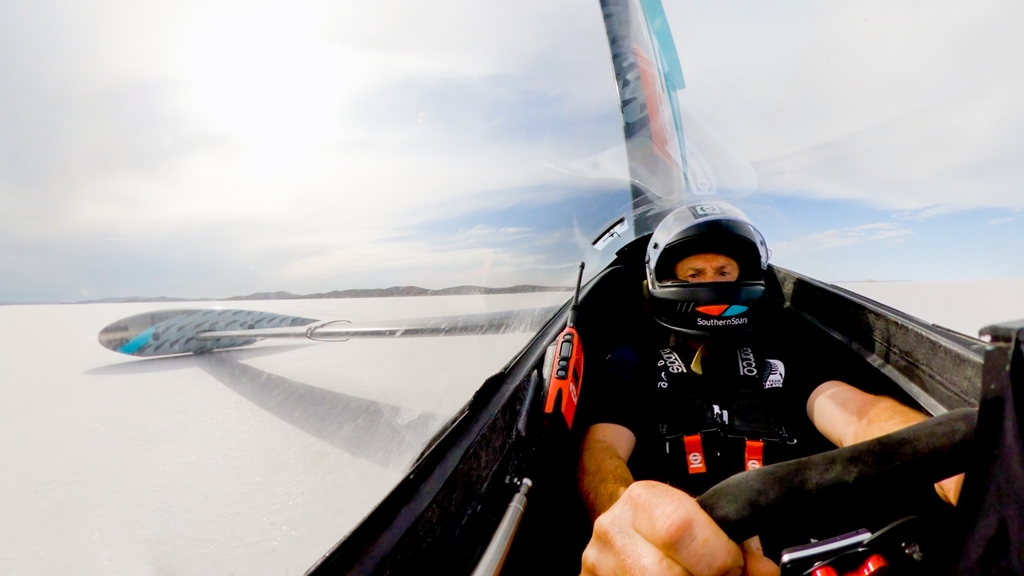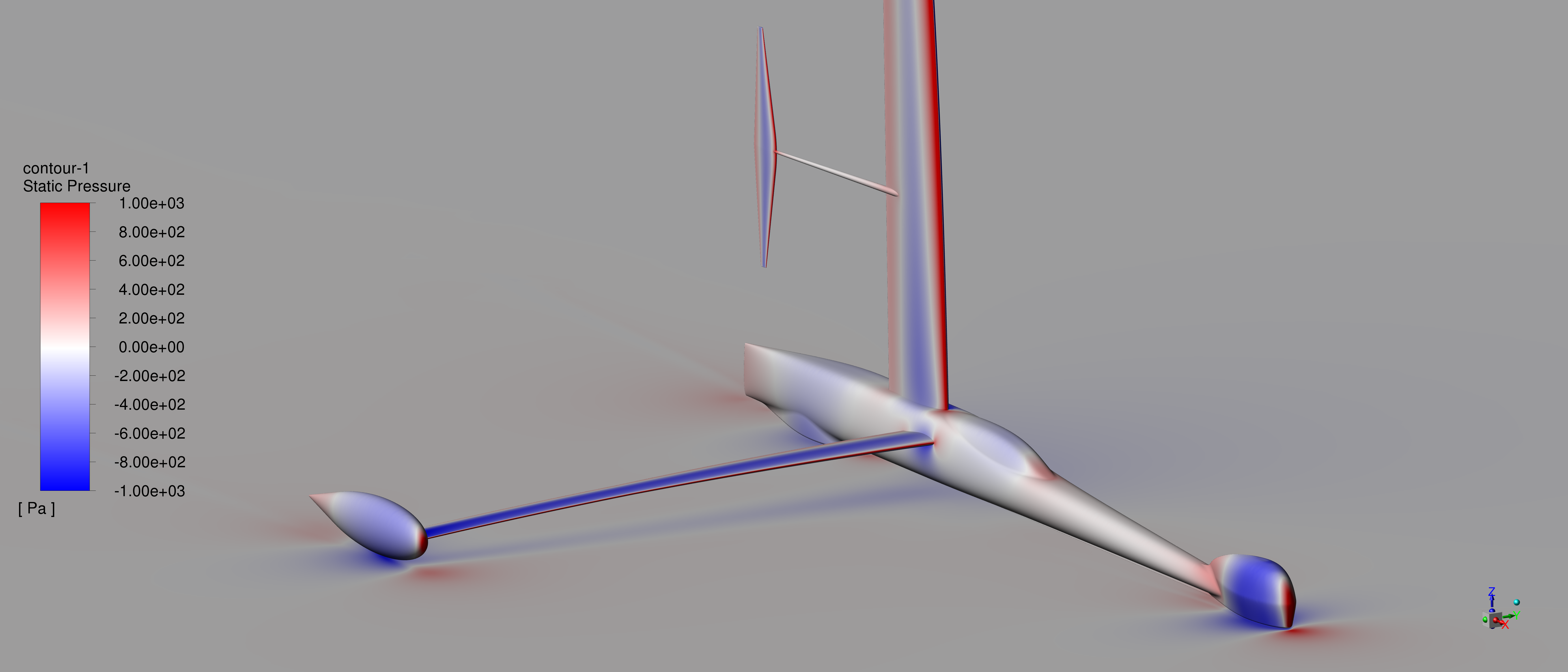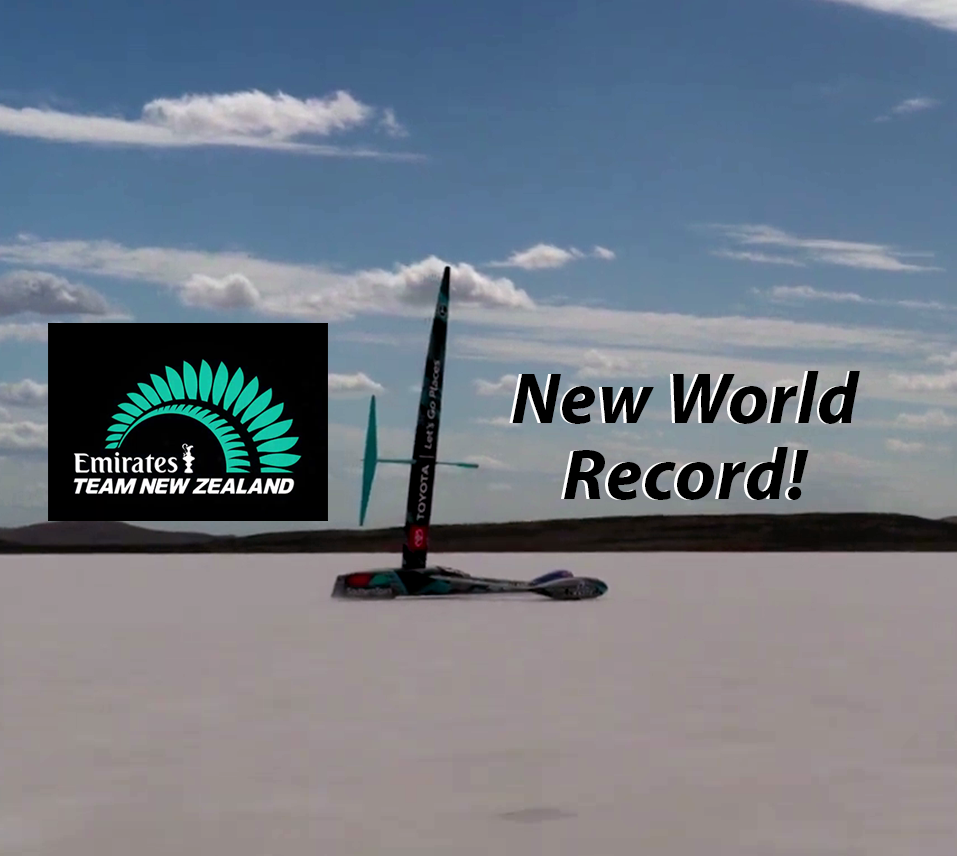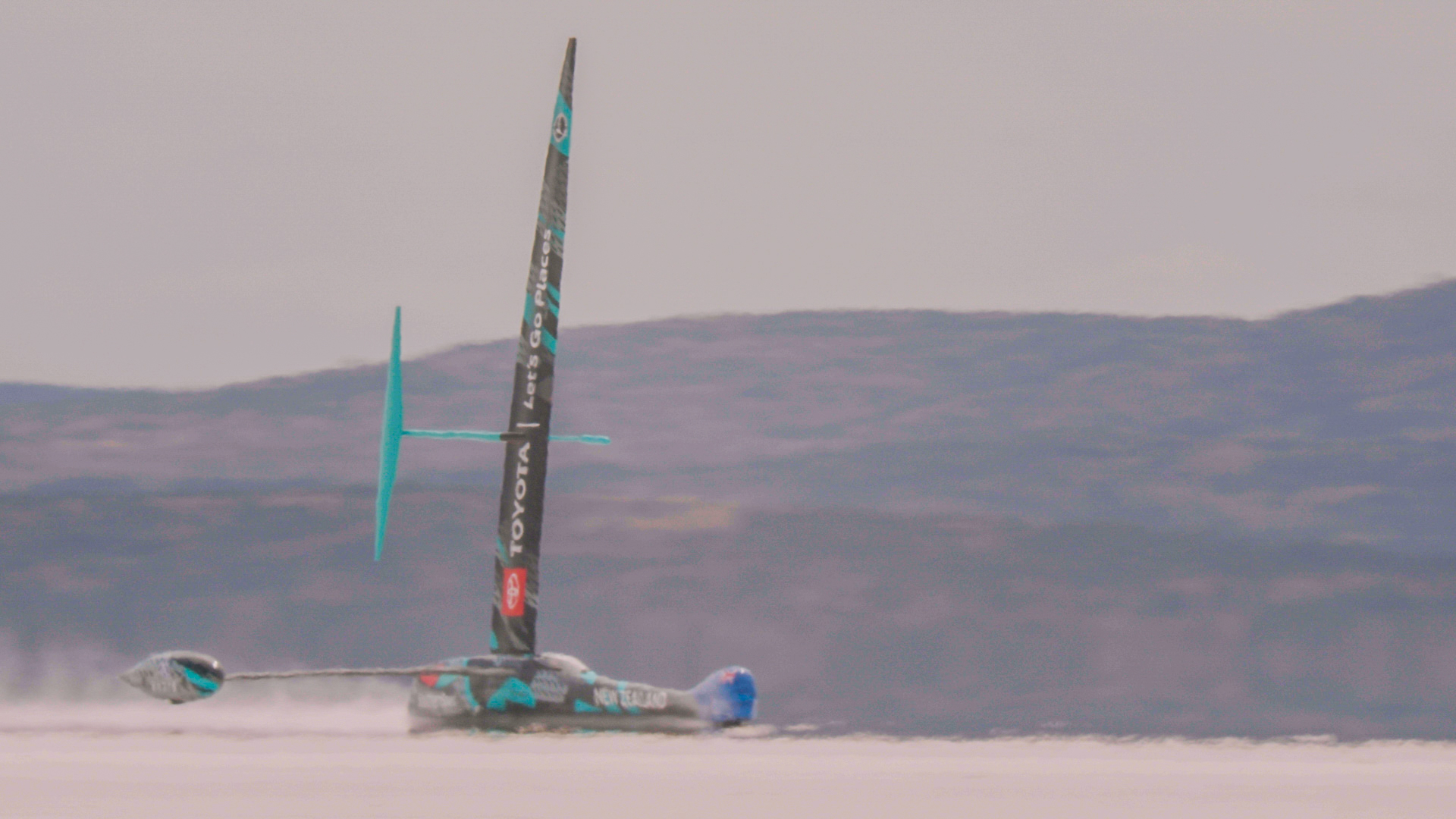In December 2022 on the remote salt lake of Lake Gairdner in South Australia, the hot, dusty conditions must seem like a world away from Auckland’s Hauraki Gulf for the team assembled from Emirates Team New Zealand (ETNZ).
Their craft ‘Horonuku’ (meaning “gliding swiftly across the land”) is a unique 14-metre land yacht. It has no engine, instead Horonuku is entirely powered by the thrust forces acting on its rigid carbon-composite wing, generated by the wind flowing over a carefully optimised aerofoil shape. To achieve this, ETNZ assembled a small but passionate team that set about designing and manufacturing this one-off vehicle in record time, drawing upon all the clever engineering techniques that they have refined over multiple, successful America’s Cup campaigns.
The current wind-powered land speed record is held by Britain’s Richard Jenkins, whose “Greenbird” land yacht hit 202.9 km/hr in 2009 in California. For a new world-record to stand, the ETNZ yacht must:
- Sail on a natural surface with a flat elevation (+/- 1 metre) – so no cheating “downhill” runs!!
- Be started only by a human push-start – so no chance to get towed for a flying start!
- Sustain a significant speed gap for at least 3 seconds (above 204.5 km/hr for 3+ seconds)
Sometimes, the best laid plans can be thrown into disarray by the weather, and Australia’s 2021/22 La Nina weather event has become an unexpected factor in this record attempt. Instead of a bone-dry lake, the team arrived to encounter the salt flats under water. As the water evaporated, the team patiently waited for conditions to suit them – as the design of Horonuku was intended to perform best under 30-35 knots of wind on a perfectly dry surface.

Horonuku is piloted by Glenn Ashby, an Australian who has achieved significant success as an America’s Cup sailor with ETNZ, as well as an Olympic silver medal and 14 World Championships across different classes of boat. To exceed the world-record, he will be relying on experience drawn from across the broader ETNZ team – engineers and designers with careers defined by the complex physics of aerodynamics, dynamics, structural mechanics and composite materials.
For many parts of this project, ETNZ designers made an early decision to use readily available off-the-shelf automotive components such as hubs, brakes, rims and tyres. Nevertheless, Ansys Mechanical was still used extensively to understand and refine the metallic components on Horonuku which were used in conjunction with off-the-shelf parts.

Figure above: Optimisation of rear swingarm - topology optimisation used to inspire optimal shape within larger packaging volume (Supplied by ETNZ)
For example, Ansys was used extensively to refine possible design concepts for the rear swingarm component. Initially, designers used topology optimisation in Ansys to obtain a workable design within a roughly defined packaging volume (which accounted for constraints relating to serviceability, suspension performance and minimising overall height/width for lowest frontal area). Subsequent static structural simulations in Ansys Mechanical were used to design a tubular fabricated concept based on this topology optimised shape – leading to a final design with fabricated profile cut and bent plates that was quicker and easier to manufacture.
Adrian Robb, Designer, ETNZ, explained to LEAP that working on Horonuku presented numerous technical challenges as “normally, I’m working on AC75 foil wings with much higher strength materials and an emphasis on reducing wasted volume. For Horonuku, we were working under incredibly short timelines, so our design workflow had an emphasis on speed & cost of manufacture. With Ansys as a critical part of our workflow, we arrived at a workable design quickly – with enough space within the fuselage that we could utilise various construction concepts.”
Also at ETNZ, Simon Corkery acted as aerodynamicist for Horonuku, using CFD simulations in Ansys Fluent to study the aerodynamics of various configurations over its entire range of operating conditions. Feedback from his CFD simulation results were used to advise potential modifications to the layout, with an ultimate aim of optimising the aerodynamic shape of the fuselage and minimising overall drag. Early simulation results were found to be especially valuable in refining the location of the outrigger arm, wing and elevator.

Figure above: Visualisation of Horonuku's aerodynamic performance using contours of static pressure (Supplied by ETNZ)
Simon Corkery explains that “at ETNZ, it is essential for us to use robust, fast and consistent CFD codes and meshing tools in order to filter through multiple design candidates and rapidly optimise our designs – whether they are for America’s Cup yachts or wind-powered land vehicles. For the Horonuku project, we used aerodynamic simulations in Ansys Fluent, coupled to our in-house code, to enable us to quickly analyse a very large number of potential candidate designs and operating conditions. I’m glad to say that Ansys Fluent has proven to be well suited to our needs.”
While the initial design concept for Horonuku was based on Richard Jenkins’ Greenbird (the previous wind-powered land speed record holder), the ETNZ team had to make key decisions on component sizings, wheel layout, mass distribution, as well as the shape of the aerodynamic lifting surfaces and fairings. Despite looking vastly different to an America’s Cup yacht, ETNZ aerodynamicists applied many of the same aerodynamic ideas learnt during the last AC campaign to improve the design of Horonuku.
One such example is the addition of a skeg along the underside of the fuselage - this modification helped to prevent air from the pressure side of the wing from bleeding underneath the fuselage, giving Horonuku significantly improved lift and lower induced drag. Even minor tweaks to the layout of the outrigger arm were also found to have a big impact on performance. Simon describes their CFD simulations “helping us pinpoint a critical problem early on, where the underside of the outrigger arm would stall and cause higher drag. Visualisation of our Fluent CFD simulations showed that this was a result of ground-effect induced flows, which we were able to correct by raising the height of the arm slightly (and subsequently running additional simulations to identify by how much the arm needed to be raised to avoid this effect, with sufficient confidence).”
The new wind-powered land speed world-record of 222.43km/h (138.21mph) was officially achieved by Emirates Team New Zealand and Glenn Ashby in Horonuku on 11th of December at Lake Gairdner in South Australia - officially ratified by the World Land Sailing Organisation, Federation International de Sand et Land Yachting (FISLY).
The record breaking run proved to be quite a rollicking ride for Glenn Ashby, as you can see in the footage below (especially the video taken from within the cabin!):
Simon Corkery also notes that “the weather since our team arrived at Lake Gairdner in South Australia has very challenging, and different to the conditions we had planned for. In fact, the run in which Glenn surpassed the previous world record had a wind speed of only approximately 20 knots. We had optimised our design for conditions with gusts of around 35 knots, where the wind has approximately 5 times more available power. Based on this, I’m sure that Horonuku will go quicker still, once we are able to harness more favourable conditions!”
Greg Horner, Managing Director, LEAP Australia adds that “this entire project has been a tremendous demonstration of the ingenuity that is possible by combining simulation with the right people and processes - a small, dedicated team can complete a detailed design optimisation study in a very short space of time.
"LEAP and Ansys have been proud suppliers to the team for 20+ years. It’s incredibly rewarding to see that ETNZ has had this world-record ratified, but at LEAP we agree with Simon and suspect that Horonuku still has plenty of speed left in it, under the right conditions!”








